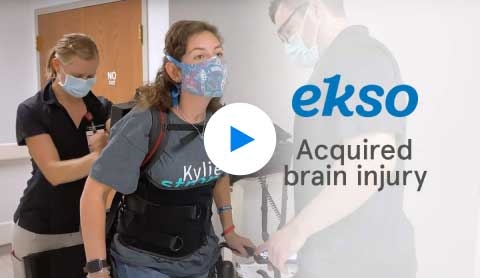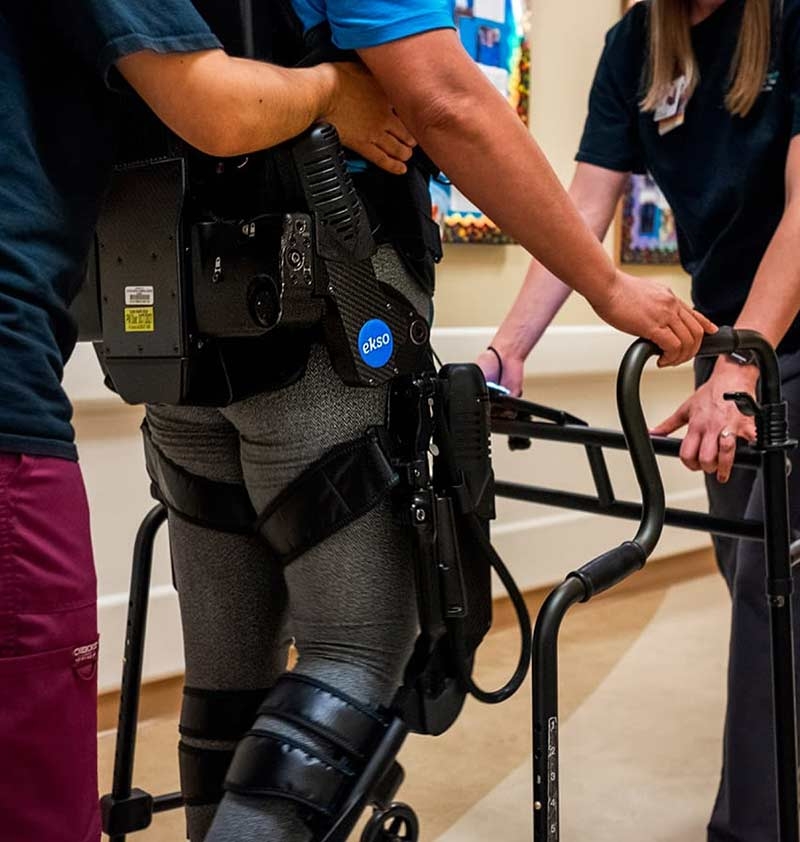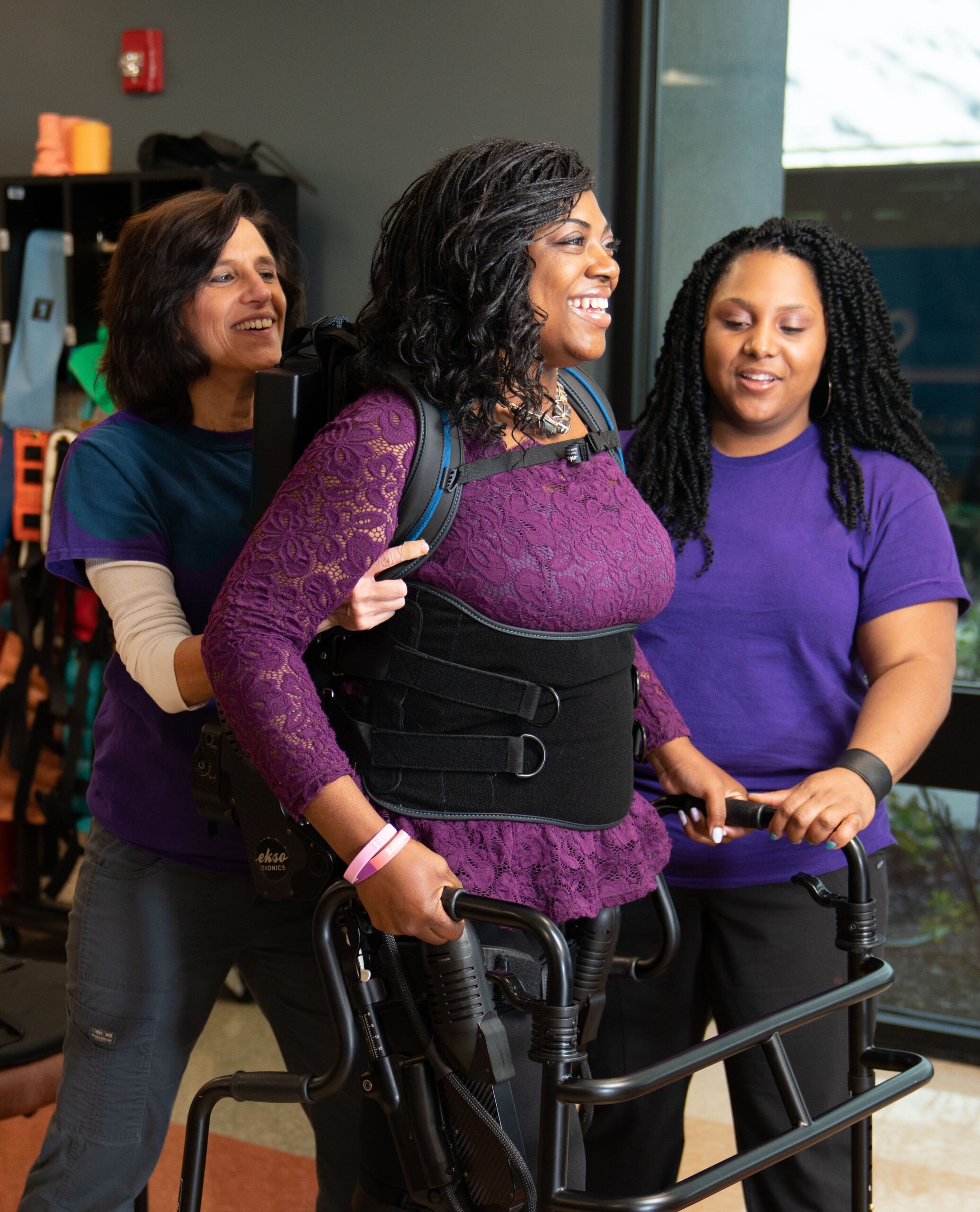Acquired brain injury
As the world leader in exoskeleton technology, Ekso Bionics takes pride in providing the leading exoskeletons on the market for rehabilitation. EksoNR® is safe and effective for patients who have lost mobility due to an acquired brain injury including stroke.

What is an acquired brain injury?
An acquired brain injury (ABI) is defined by the Brain Injury Association of America as any injury to the brain that is not hereditary, congenital, degenerative, or induced by birth trauma. There are two basic types of brain injuries:

Traumatic brain injury (TBI)
This type of injury is an altering of brain function caused by an external force. These are often head injuries caused by falls, car accidents, assaults, or other blows to the head. A TBI may be classified as closed or open, depending on if the skull or other brain structures were breached during the injury. It is important to note that not every head injury will result in a TBI since it is possible to damage the outside of the head or skull without bruising, injuring, or otherwise damaging the brain.

Non-traumatic brain injury
This type of injury is caused by internal factors that either cause damage to the brain immediately, such as in the case of oxygen deprivation, or over time, such as a worsening infection or growing tumor. Common examples of non-traumatic brain injuries include strokes, brain tumors, drownings, encephalitis, meningitis, exposure to toxins, or long-term substance abuse.

Health effects
of ABIs
It’s estimated that there are roughly 1.5 million TBI cases in the United States each year. The overall effects of a brain injury will vary based on the location and severity of the injury. These effects can encompass one or more systems resulting in physical, cognitive, behavioral, speech, sensory, perceptual and/or visual deficits. An ABI may also result in impairments to a patient’s mobility or other areas that interfere with activities of daily living.
This is where our EksoNR exoskeleton program comes in, to help patients utilize their brain plasticity and retrain the muscles to begin walking again. Brain plasticity speaks to the idea that the brain is plastic, or moldable, with time and practice. This means that even if an area of the brain gets injured and cannot support the functions that it did before, with rehabilitation other areas of the brain can learn to take over those functions. While there is no doubt that brain injuries can be extremely difficult for both patients and their family members, with the right clinical support and our medical exoskeleton program, many patients will be able to start on their road to recovery.
Brain injury treatment
An ABI is diagnosed by a medical professional using tools like CT scans and MRIs to visualize the location and extent of an injury to the brain. Once the patient is medically stabilized, they will begin their process of rehabilitation. Rehabilitation can include physical therapy, occupational therapy, speech therapy, and neuropsychology to help the patient regain lost abilities. EksoNR, the first and only exoskeleton to be cleared by the FDA for use with patients after ABI, is utilized by physical therapists to improve patients’ orientation to midline, weight shift, stepping quality, and lower extremity muscle strength. EksoNR utilizes the principles of neuroplasticity to help physical therapists deliver high quality, intense, repetitive, task-specific practice to patients on their journey of reclaiming independence.


The EksoNR
difference
Our EksoNR program is the next step in neurorehabilitation, thanks to our smart exoskeleton that can help patients with ABI walk on their own during any stage of inpatient or outpatient rehabilitation. EksoNR can be utilized to help a patient stand up for the first time and take their first few steps. It can also be used for patients who can already walk on their own but need to address the quality of their gait.
With smart data capture and clinician controls, medical professionals can evaluate patients and their training sessions in real-time to best help each individual on their road to recovery.
The field of rehabilitation continues to evolve in accordance with new research and new technologies like EksoNR. These new methods and new devices can help many patients reduce their deficits and reach their fullest rehab potential.

